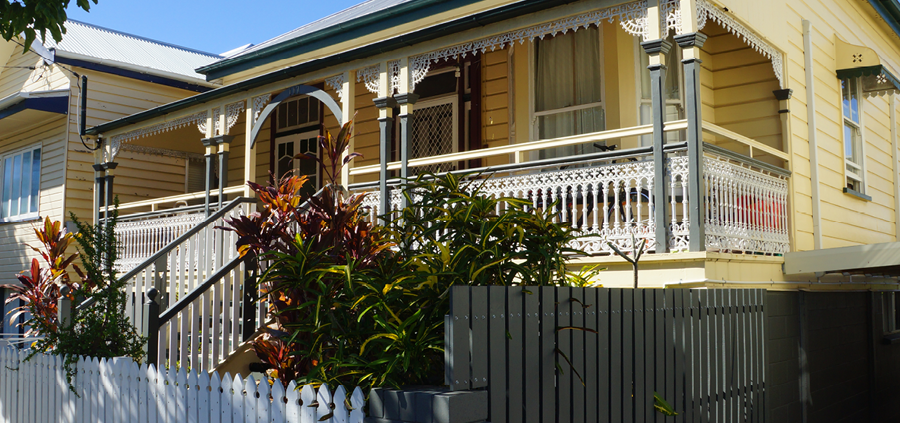A History Of Australian Period Homes
While our nation’s architecture has certainly changed over the years, Australian period homes and their relevant eras each have their own distinct character.
Considering our relatively short yet colourful history as a standalone country, Australia has quite a number of easily identifiable forms of residential architecture. Depending on where you live, you might already be familiar with many of the different formats, and could easily identify them on face value.
Properties that embody these notable styles are known for their well-thought out designs and high quality materials, and are now in high demand as a result. While some Australian period homes are certainly easier to categorise than others, there’s no doubt that each type is a love letter to the era it was originally constructed in, and are considered by many to be living pieces of history.
Australian Period Homes Through The Ages
While some Australian period homes are easier to spot than others, many architects who brought these types of properties to life originally drew their inspiration from abroad. Although each era of Australian period homes certainly have their own distinct characteristics, the following are considered to be the most iconic in our nation’s timeline of residential architecture.
Pre 1840: Colonial – Heavily inspired by the Georgian era and Regency style popular at the time in the “motherland” of the United Kingdom, colonial homes are well known for not just being larger than the average and perfect for families, but for their clean and symmetrical look that often applies to window designs, fascia, roofing and more.
1840 to 1940: Queenslander – Featuring high-stump construction used to provide relief through the state’s sweltering summers, Queenslanders are famous for their wraparound verandahs and timber structures. Native to the Sunshine State, these iconic properties were ultimately built to last and are still in high demand even today.
1840 to 1900: Victorian – Although not one of the most easily identifiable Australian period homes, Victorian style properties are relatively widespread across the nation. Typically, they are grouped into three different periods: early, mid, and late, with the design transforming from a simple workers cottage to grand terrace houses with wrought iron and intricate details.
1875 to 1890: Boom – Foremost built to represent wealth, boom style properties began to emerge midway through the Victorian era. Lavish and over-the-top decoration will be found inside and outside these types of Australian period homes, and although less common than its predecessor, they can still be found throughout the nation’s most affluent suburbs.
1900 to 1915: Art Nouveau – As the forerunner of the art deco design movement, art nouveau style properties are still dotted throughout the south east of Australia today. The brickwork was often used in these properties for artistic design as opposed to practicality, and they are also noted for their relatively outlanding roofing styles and chimneys.
1900 to 1915: Federation – Otherwise known as Edwardian homes, these iconic Australian period homes are often distinguished by their red brick exterior, stained glass, bay windows, return verandahs, tessellated tiles, pressed-metal ceilings, finials, turned-timber posts and fretwork, a long central corridor, and roofs in either slate or terracotta tiles.
1910 to 1930: Californian Bungalow – As the name may indicate, this period of Australian housing is very much inspired by the types of architecture coming out of the United States. Famed for their low roofs, highly visible columns and extended verandas, these abodes are typically one floor only and regarded as being relatively unassuming and understated.
1930 to 1950: Art Deco – Defined by their curved facades, decorative brickwork, geometric elements, chevron patterns, metal-framed windows, parquetry floors, timber-veneer wall panelling, built-in joinery and mottled tiles, art deco style Australian period homes were also noted for their splashes of creamy colours and the use of pastels.
1950 to 1965: Mid Century Modern – Although this era of Australian period homes are harder to define by date, the post World War II building boom saw this design explode. Today, they commonly feature large expanses of glass to capture light, open plan layouts, a strong connection to the outdoors and limited building materials.
In contrast, today’s homes commonly feature large open-plan combined kitchen, dining, entertainment, study and family area, hotel-style bathrooms and ensuite, external entertaining areas, rendered and painted finishes, reconstituted or natural stone benchtops, and timber or tiled floors with carpeting usually only in bedrooms. However, they can easily feel sterile when compared to the wealth of character found in Australian period homes, which is why the latter remains so popular even today.
When renovating older buildings such as Australian period homes, it’s not uncommon to encounter issues like uneven or springy floors, rotten timber and even white ants. Before you start shopping for new flooring materials, it’s always a good idea to speak to the professionals as a means to get the right advice – but where do you find them?
Sourcing Flooring Advice From The Professionals
While your options for carpet, timber and tiles are almost limitless, selecting the right type for your home certainly isn’t an easy feat. With each space, comes a different preference or priority: are you chasing style, functionality, or simply want to stay within the budget?
In operation for over 25 years, at Tile Wizards we pride ourselves on getting you more – for less. We pioneered the warehouse format, and our stores are purposefully designed to make your selection easier, and ultimately offer our customers quality, price and the right advice.
Even if you are just after some honest and friendly advice – please don’t hesitate to get in touch with us at Tile Wizards today for a free quote. We’re able to work with you in order to bring your dream flooring solution to life.




